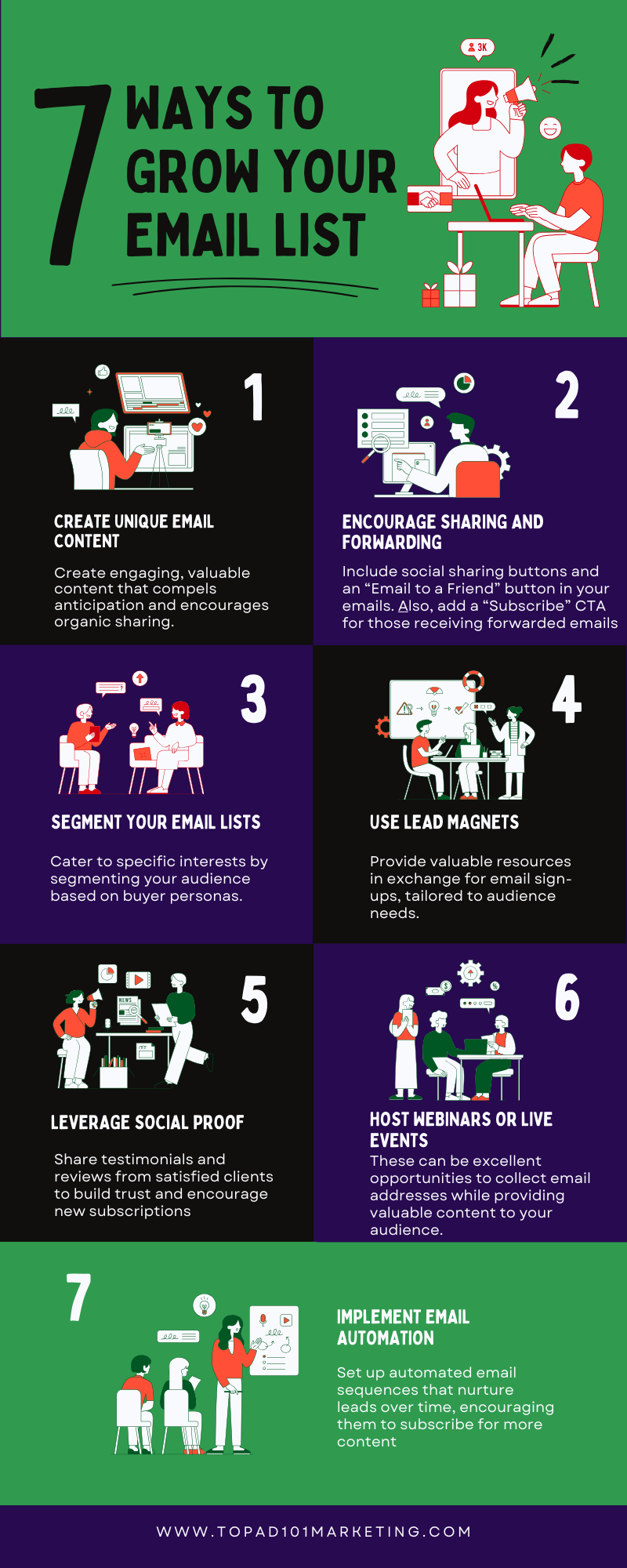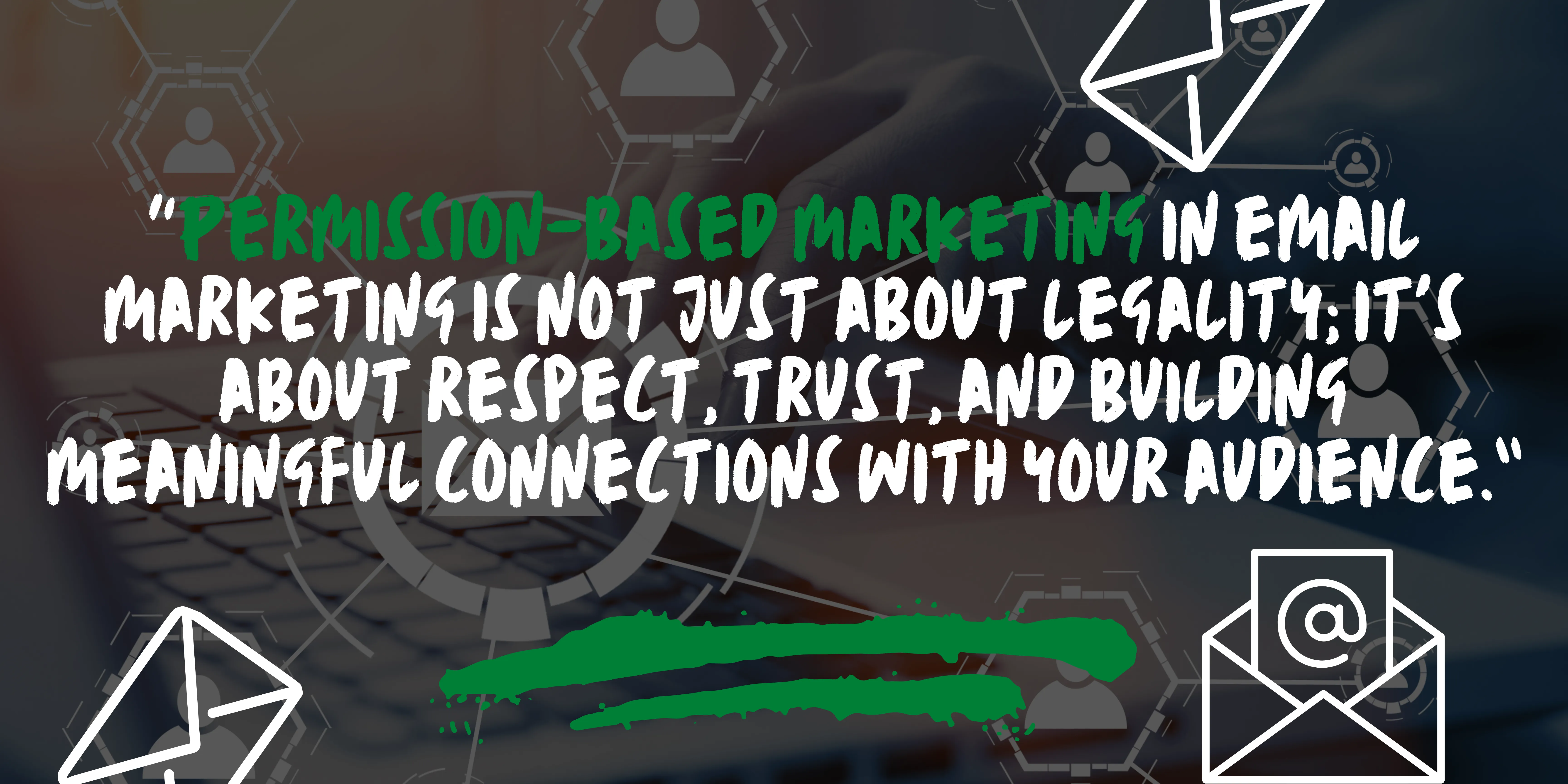Mastering Email Marketing: Part 1 - Best Practices and Pitfalls to Avoid

Best Practices and Pitfalls to Avoid
Table of Contents
1). Introduction
2). Best Practices for Email Marketing
3). Pitfalls to Avoid in Email Marketing
4). Understanding Email Marketing
5). Conclusion: Mastering Email Marketing Series
Email marketing serves as a potent tool for businesses to forge connections with their audience, boost engagement, and drive sales growth. In Part 1 of this "Mastering Email Marketing" 3-Part Series, we will discuss best practices and pitfalls for ensuring that your email campaigns are effective and successful.
Implementing best practices can help organizations improve their performance, productivity, and overall success.
Best Practices
Best practices provide a standardized framework for achieving desired outcomes and can help to streamline operations, reduce errors, and increase consistency.
Here are the top five best practices for Mastering Email Marketing:
- Build a Targeted Email List: It is essential to have a quality email list of subscribers who have opted in to receive your emails. Avoid buying email lists, as they are often of low quality and can result in high unsubscribe rates and damage to your sender's reputation.
- Tailor Your Emails: Crafting personalized content enhances engagement and relevance, resonating with your subscribers on a deeper level. Use their name, segment your list based on demographics or behavior, and tailor the content to their interests.
- Craft Engaging Subject Lines: The initial impression matters; entice recipients to open their email with compelling subject lines. Keep it concise, clear, and relevant to the content inside.
- Use Responsive Design: With more people checking their emails on mobile devices, it is crucial to use responsive design in your emails. This guarantees that your emails are tailored for diverse screen sizes and devices, enhancing accessibility and user experience.
- Test and Measure: A/B testing is a valuable tool to understand what works best for your audience. Test different subject lines, content, images, and calls-to-action to see what drives the best results.
Use analytics to measure open rates, click-through rates, and conversion rates to optimize your campaigns and lay the groundwork for scalability.
Deciphering Email Metrics
Open rates indicate the percentage of recipients who opened an email, providing insights into the effectiveness of the subject line and sender name.
Click-through rates measure the percentage of recipients who clicked on a link within an email. This metric helps businesses understand which content resonates with their audience and drives engagement.
Conversion rates measure the percentage of recipients who completed a desired action, such as making a purchase or signing up for a newsletter.
By tracking conversion rates, businesses can determine which emails are most effective at driving conversions and adjust their strategies accordingly.
Pitfalls to Avoid
Email marketing can be a powerful tool for businesses to connect with their audience and drive engagement, but there are several pitfalls that should be avoided when trying to master this strategy. Some of the common pitfalls to avoid include:
- Spamming: Sending too many emails or irrelevant content can lead to recipients marking your emails as spam. This can damage your sender's reputation and affect deliverability rates.
- Neglecting Mobile Users: Not optimizing your emails for mobile devices can result in poor user experience and lower engagement rates.
- Ignoring Data Privacy Laws: Ensure that you follow data privacy laws such as GDPR and CAN-SPAM regulations. Obtain consent before sending emails and provide an effortless way for recipients to unsubscribe.
- Overlooking Segmentation: Sending generic emails to your comprehensive list can result in lower engagement rates. Segment your list based on demographics, behavior, or interests to send more targeted and relevant content.
- Lack of Testing: Not testing your emails before sending them out can lead to mistakes in formatting, broken links, or typos that can harm your brand's credibility.
By following these best practices and avoiding common pitfalls, you can improve the effectiveness of your email marketing campaigns and drive better results for your business.
Understanding Email Marketing
What is email marketing?
Amidst this fast-paced digital landscape, email marketing has evolved into a vital and dynamic strategy for businesses to leverage. It involves sending personalized and targeted messages to a specific group of people through email.
We will explore the importance of email marketing and highlight its many advantages, including its cost-effectiveness, high ROI, and direct engagement with the audience.
Defining Email Marketing
Email marketing involves reaching out to potential customers, leads, or existing clients through carefully crafted emails. These messages may include promotional content, product updates, newsletters, or informative content tailored to meet the recipients' needs.
It is a permission-based marketing approach, ensuring that messages are sent to individuals who have voluntarily subscribed to receive communications from the sender.
The Importance of Email Marketing
Email marketing is a powerful tool for businesses to connect with their audience, build relationships, and drive sales. It allows companies to reach their target audience directly in their inbox, where they are more likely to see and engage with the content.
Compared to traditional marketing channels like print or television advertising, email marketing is inexpensive. This makes it a great option for businesses of all sizes, from small startups to large corporations.
Here are the top three key factors about email marketing you must consider:
- Cost-Effectiveness: Compared to traditional marketing channels, email marketing proves highly cost-effective. With minimal production and distribution expenses, businesses can reach a substantial audience without breaking the bank. This makes it an ideal choice for startups, small businesses, and even larger enterprises seeking cost-efficient promotional solutions.
- High ROI: One of the most significant advantages of email marketing lies in its impressive return on investment. As email campaigns are targeted and personalized, they have a greater potential to resonate with recipients, leading to higher conversion rates. The ability to track open rates, click-through rates, and overall campaign performance allows businesses to refine their strategies and achieve even better ROI over time.
- Direct Audience Engagement: Email marketing offers a direct line of communication with the audience, allowing businesses to connect with potential customers on a personal level. This direct engagement fosters a sense of brand loyalty and trust, which is essential for building long-term customer relationships. It also provides a valuable platform for gathering feedback, addressing inquiries, and providing excellent customer support.
Email marketing is still an invaluable tool for businesses of all sizes. Its cost-effectiveness, high ROI, and direct audience engagement make it a must-have strategy for any marketing campaign.
Leveraging email marketing drives connections, sales, and growth, positioning businesses in the competitive marketplace strategically.
Building Your Email List
Building a quality email list of engaged subscribers is crucial for the success of any email marketing campaign. Ethical practices ensure that subscribers have willingly opted-in to receive communications, creating a valuable and engaged audience.
Let's explore some ethical strategies that leverage GrooveSolos for vetted traffic and GrooveMail for automation:
- Opt-In Forms and Landing Pages - Create clear and compelling opt-in forms and landing pages that clearly explain what subscribers can expect to receive. Use Groovemail's automation features to trigger personalized welcome emails to new subscribers, thanking them for joining the list and setting expectations for future communications.
- Content Offerings - Offer valuable content such as e-books, guides, webinars, or exclusive access to resources that resonate with your target audience. Use Groovemail's automation to deliver content automatically once subscribers sign up, ensuring a seamless experience.
- Segmentation and Personalization - Utilize Groovemail's segmentation tools to categorize subscribers based on their interests, behaviors, and preferences. This enables you to send targeted and relevant content, increasing engagement and fostering a sense of connection with your audience.
- Referral Programs - Encourage subscribers to refer friends and colleagues to join the email list through incentives such as discounts, exclusive content, or rewards. Groovemail's automation can handle referral tracking and reward delivery efficiently.
- Social Media Integration - Leverage GrooveSolos' vetted traffic to drive potential subscribers to your website or landing pages. Integrate social media platforms to promote your email list and encourage sign-ups from a broader audience.
- Transparency and Privacy - Clearly communicate your email marketing practices, including frequency and the types of content subscribers will receive. Assure subscribers that their data is secure and will not be shared with third parties. Groovemail's automation can help manage privacy preferences and ensure compliance with data protection regulations.
- A/B Testing - Use Groovemail's automation to conduct A/B tests for different email subject lines, content formats, or calls-to-action. This allows you to optimize your email campaigns and better understand what resonates with your audience.
- Ensure the cleanliness and upkeep of your list - Regularly cleanse your email roster to eliminate inactive or unengaged subscribers. Groovemail's automation can assist in naming inactive subscribers and re-engaging them with targeted campaigns.
By combining GrooveSolos' vetted traffic with Groovemail's automation, digital marketers can build a quality email list of engaged subscribers ethically.
This approach ensures that subscribers genuinely value the content they receive, leading to higher open rates, click-through rates, and a more successful email marketing campaign.
The Significance of Permission-Based Marketing and Subscriber Consent
Permission-based marketing and subscriber consent are essential pillars of ethical email marketing practices. Emphasizing these aspects not only helps businesses keep a positive reputation but also promotes trust and engagement with their audience.
Transparency in business practices, such as openly sharing information about products, services, pricing, and company policies, helps to build trust with customers. When consumers feel that a company is being honest and forthcoming, they are more likely to develop a sense of loyalty and connection with the brand.
Integrity is another key aspect that can have an impact on a company's reputation. Through reliability, accountability, and transparency, businesses demonstrate ethical commitment, fostering credibility and trust with their audience.
Here's why permission-based marketing is significantly more powerful in this digital marketing era:
- Respectful Communication: Permission-based marketing ensures that you are reaching out to individuals who have explicitly expressed interest in your content. By obtaining consent from subscribers, you respect their privacy and their preferences for communication, which helps create a positive brand image.
- Higher Engagement: When subscribers willingly opt-in to receive your emails, they are more likely to engage with your content. This leads to higher open rates, click-through rates, and reduced chances of your emails being marked as spam.
- Compliance with Regulations: Many countries have data protection laws, such as GDPR (General Data Protection Regulation) in the European Union. Obtaining explicit consent from subscribers ensures compliance with these regulations, helping you avoid legal complications.
- Long-Term Relationships: Building a list of engaged subscribers through permission-based marketing enables you to establish long-term relationships. Subscribers who willingly receive your emails are more likely to stay engaged and become loyal customers or supporters of your brand.
- Quality Leads: Subscribers who give consent to join your email list are more likely to be interested in your products, services, or content. This means you are attracting high-quality leads, increasing the chances of conversions and customer retention.
- Reduced Complaints: Permission-based marketing reduces the risk of recipients marking your emails as spam. High spam complaints can harm your sender's reputation and affect email deliverability.
- Personalization Opportunities: When subscribers consent to share certain preferences, you can use this information to personalize your emails and deliver more relevant content. Personalization leads to better engagement and increased satisfaction among subscribers.
- Trust and Credibility: By focusing on permission-based marketing, you demonstrate a commitment to transparency and respect for your audience's choices. This builds trust and credibility with your subscribers and enhances your brand's reputation.
Obtaining permission and consent from subscribers is crucial for ethical email marketing practices, ensuring engagement and compliance. The upcoming “Mastering Email Marketing: Part 2 - Crafting Compelling Email Content," will provide you with essential tools to effectively navigate this dynamic marketing approach.
By placing importance on these principles, you establish a powerful base for a thriving and enduring email marketing strategy.

To growth through influence,
Troilus J Moss | Director of Sales & Marketing
P.S. Ready to unlock Unlimited, Unstoppable Traffic? Take the first step now: Get started today! ©2023 TopAd101 Marketing
Meet Troilus J Moss
Troilus J Moss is a seasoned Digital Asset Entrepreneur and Digital Marketing Professional, renowned for his exceptional skills in copywriting and creative content development. Serving as an influential figure in the digital realm, he fulfills roles as an active entrepreneur, coach, and the Director of Sales and Marketing at TopAd101 Marketing, where his strategic digital marketing campaigns have propelled businesses to new heights.
Beyond his entrepreneurial endeavors, Troilus dons the hat of an esteemed editor, crafting exclusive insights and valuable knowledge for digital asset entrepreneurs through his Digital Asset Insider Newsletter. His commitment to empowering entrepreneurs with innovative information is evident in his contributions to prestigious publications such as "The Marketing Toolbox Blog," and "The Digital Asset Entrepreneur Blog."
With a deep understanding of innovative technologies like Artificial Intelligence and automation, Troilus stands as a trailblazer in the dynamic digital landscape. His fervor for fostering business growth and harnessing technology to optimize efficiency distinguishes him as a visionary in the digital marketing domain.
Troilus actively enriches TopAd101 Marketing's YouTube channel with invaluable insights and tips to support entrepreneurs in navigating the digital sphere successfully. Stay abreast of the ever-evolving digital landscape and access his latest videos by subscribing to the channel today!
























